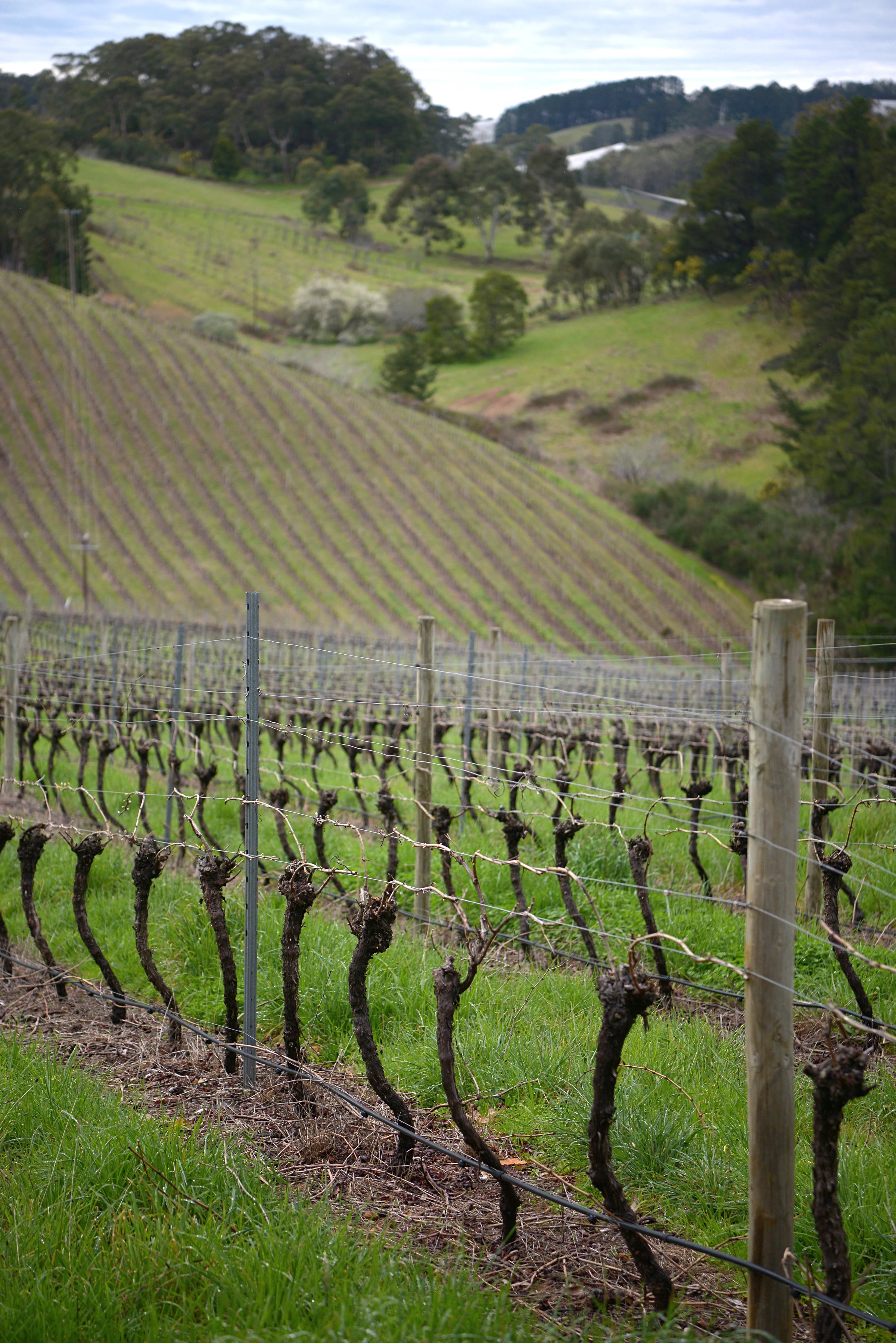Anyone who has spent any time exploring the Grenache-driven reds of Châteauneuf-du-Pape knows that the grape can take on many personalities. For every bright, perfumed, ‘Burgundian’ expression (think Château Rayas), there are three richer, more medicinal versions (think cough syrup) that speak all-too-clearly of their hot-climate origins.
Like the southern Rhône, where Châteauneuf-du-Pape is located, Australia’s McLaren Vale is, technically, a “Mediterranean” climate—and its range of expression of its Grenache-based reds is similarly nuanced. Today’s wine from Chapel Hill is a testament not only to Grenache’s versatility but to the moderating influence of mature vines (91 years old!), which in this case have delivered a wine that is simultaneously broad shouldered and balanced. This is, like Château Rayas, one of those wines that shows you the ‘Pinot’ side of Grenache: It is fuller-bodied and viscous than Pinot Noir, with layers of exotic spices and some uniquely Australian minty accents, but there’s a clear kinship there. And then there’s the price, which cements this 2013 as one of the great values I’ve encountered out of Australia this year (or anywhere else, for that matter). It’s a game-changer for anyone who thinks only of inky Shiraz when they think of Australia; the finesse and complexity will impress, and perhaps surprise, you. But don’t be surprised: This is a McLaren Vale calling card!
McLaren Vale is in South Australia, about 20 miles south of Adelaide, and Chapel Hill is flanked by a mountain range to the east and the picturesque Gulf St. Vincent due west. They enjoy a “Mediterranean” climate—the reason why so many Spanish and Italian varieties are grown here—and this coastal zone is home to not only a rich diversity of soils, but history. Shortly after the establishment of South Australia, McLaren Vale was founded in 1838 and the first vines were planted. Nearly 30 years later, Methodist settlers built an ironstone church from which Chapel Hill takes its name, which, since the 1970s, has been purchased, renovated, and showcased as part of their winery. They now also have an events venue and, if you ever find yourself there, you’ll be stunned by the sheer beauty that surrounds this place.
This bottle is 100 percent ‘bush’-trained Grenache from three distinguished parcels throughout McLaren Vale whose soils vary widely, but are mainly comprised of sandy loams. These vines are ancient: The youngest comes in at 59 years of age and the oldest a whopping 91 years old. The 2013 vintage here saw a wet winter quickly followed by a hot, dry growing season that resulted in a quick-ripening harvest. All plots were sustainably farmed and harvested by hand (Chapel Hill also collects rainwater, which is used for all hydro-purposes in the winery, the offices, and their events venue). Each plot was kept separate during fermentation until being racked into used 300L French hogshead barrels (a popular aging vessel for Scotch Whisky) and even larger French puncheons for 18 months. In order to adhere to their hands-off approach, the wine was bottled unfined and unfiltered and then laid down to rest for an additional year.
In the glass, Chapel Hill’s 2013 “Bush Vine” Grenache displays a dark crimson red core with light garnet and orange reflections on the rim. The perfumed nose consumes you with dried cherry, cassis, raspberry liqueur, dried orange peel, tobacco leaf, underbrush, mint and hints of white pepper. On the palate, all red fruits are confirmed and a candied cherry emerges along with echoes of mint and savory herbs. It’s a full-bodied wine with balanced acidity and a rich mouthfeel that lingers on the finish alongside savory-spice components. Grenache is essentially the bigger, brawnier version of Pinot Noir—more textured, fuller-bodied, and with more pronounced tannins. Downright delicious. It’s climbing to its peak now, but I believe it still has 3-5 years of positive evolution ahead of it. This bottle will benefit from a 30-45 minute decant in large Burgundy stems serve just above cellar temp (55-60°F). Service temperature is very important so if you don’t have a wine cellar put the wine in the refrigerator for 20-30 minutes before decanting. Check it out alongside an herb-slathered, Mediterranean-inspired porchetta for a gutsy winter dinner. This is a genuinely classic wine style that doesn’t get enough attention, and it’s priced right for experimentation. Cheers!




